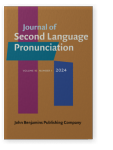Vol. 10:1 (2024) ► pp.85–109
One-day listen-and-repeat training of a non-native vowel duration contrast for speakers of Namibian languages
Listen-and-repeat training has previously been successfully used to train the perception and production of non-native vowel quality and duration contrasts. This study used a one-day listen-and-repeat training paradigm for the production of a non-native vowel duration contrast, /tite – tiːte/ with no feedback or other instructions. Learning results were assessed by acoustic analysis of the produced durations, and identification of the productions by listeners with quantity contrasts in their native Finnish language. Training participants were 18 Namibian speakers of various Bantu and Khoe languages. The results showed that the majority of the speakers did not produce a consistent acoustic duration contrast between the target words. In the identification task, the listeners’ performance was at essentially chance level for almost all of the speakers. The results are discussed in terms of earlier results using the same stimuli, training design and language background.
Article outline
- 1.Introduction
- 2.Materials and methods
- 2.1Speaker data
- 2.1.1Speakers
- 2.1.2Stimuli and training procedure
- 2.2Identification task
- 2.2.1Listeners
- 2.2.2Identification tokens
- 2.2.3Identification procedure
- 2.3Acoustic analysis
- 2.4Identification analysis
- 2.1Speaker data
- 3.Results
- 3.1Acoustic analyses
- 3.2Identifications
- 3.3Overview of results
- 4.Discussion and conclusions
- Acknowledgements
-
References
